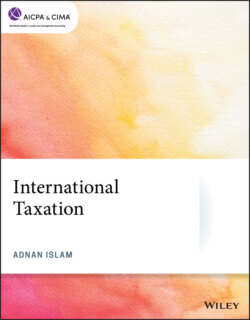Читать книгу International Taxation - Adnan Islam - Страница 71
Example 2-13
ОглавлениеX is a corporation on the accrual method of accounting, with the U.S. dollar as its functional currency. On January 1, 20X2, X acquires 1,500 British pounds for $2,250 (£1 = $1.50). On January 3, 20X2, when the spot rate is £1 = $1.49, X deposits the £1,500 with a British financial institution in a non-interest-bearing demand account. On February 1, 20X2, when the spot rate is £1 = $1.45, X withdraws the £1,500. On February 5, 20X2, when the spot rate is £1 = $1.42, X purchases inventory in the amount of £1,500. No exchange loss is realized until February 5, 20X2, when X disposes of the £1,500 for inventory. At that time, X realizes exchange loss in the amount of $120. The loss is not an adjustment to the cost of the inventory (Treasury Regulation 1.988-2(a)(1)(iv), example).
Exchange gain or loss realized from the sale or other disposition of nonfunctional currency is the difference between the amount realized and the adjusted basis of such currency. If, however, the taxpayer uses a spot rate conversion to determine exchange gain or loss with respect to a receivable, that taxpayer shall determine the adjusted basis for any nonfunctional currency received in satisfaction of the receivable in a consistent manner.
The exchange of nonfunctional currency for property is treated as (a) an exchange of nonfunctional currency for units of functional currency at the spot rate on the date of the exchange and (b) the purchase or sale of the property for such units of functional currency.
